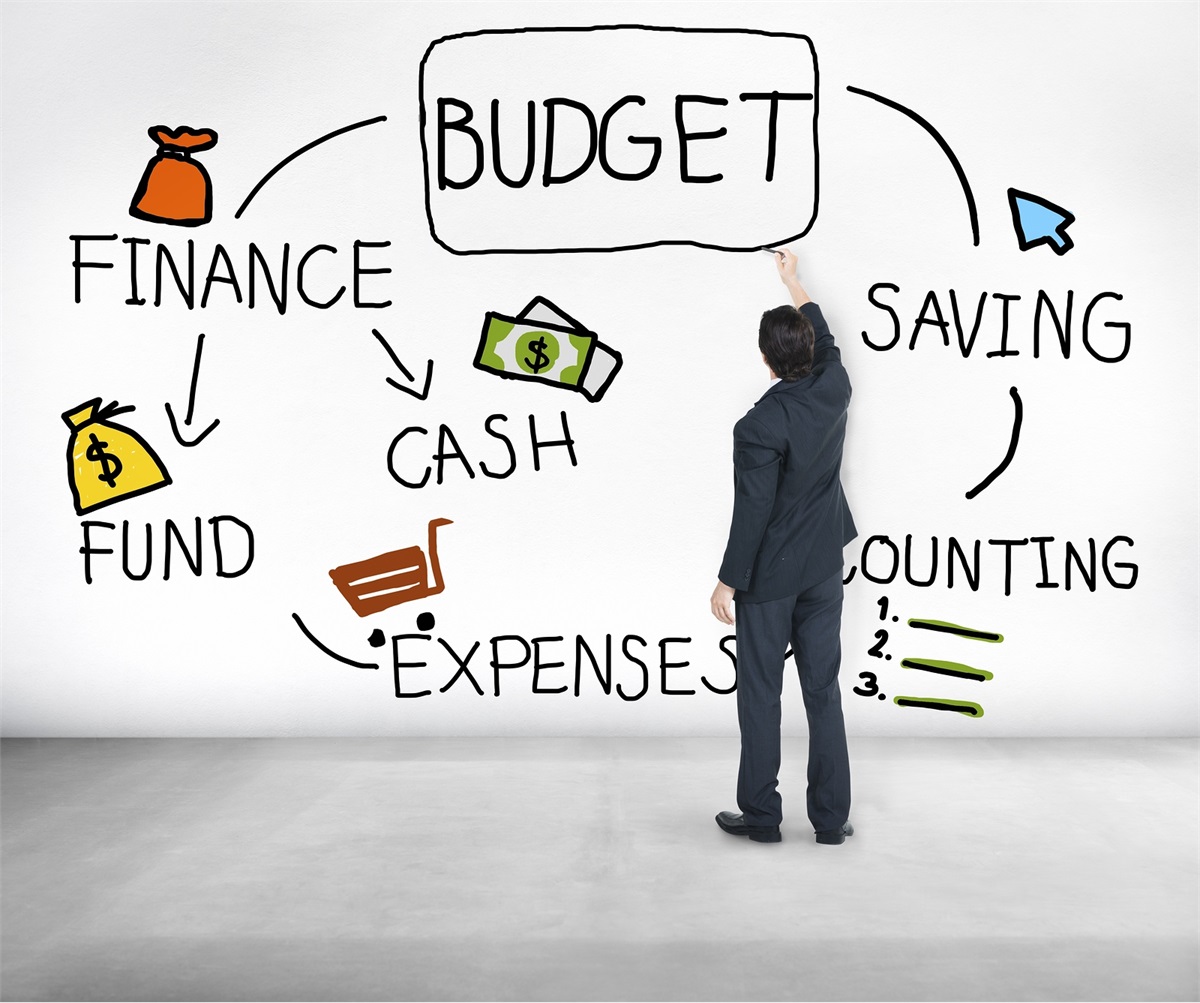Financial Planning on a Budget: Yes, It’s Possible!
Financial Planning on a Budget: Yes, It’s Possible! in today’s world, managing finances is a crucial skill that can shape your future. But what happens when your finances are tight? When saving feels impossible, or setting up a solid financial plan seems like a distant dream? You might be wondering if financial planning on a budget is even a possibility. Well, it’s not only possible – it’s absolutely achievable! Let’s dive into how you can create a financial plan that works within your budget, and set yourself up for financial success, no matter where you start.

1. Understanding the Basics of Financial Planning
Before diving into how to make financial planning on a budget work for you, let’s start with the basics. Financial planning is the process of setting goals, creating a strategy, and taking the necessary steps to manage your finances effectively. This can involve everything from budgeting to investing, saving for retirement, and ensuring you have enough for emergencies.
However, when you’re on a tight budget, the traditional financial planning methods may feel out of reach. High income often leads to thoughts of big investments, expensive savings accounts, and luxury spending. But the reality is, financial planning on a budget doesn’t require high income – it simply requires knowledge, discipline, and the willingness to follow through.
2. Assessing Your Current Financial Situation
The first step in any financial plan is assessing where you currently stand. To do this, you need to understand your income, expenses, debts, and savings. Here’s how you can get started:
- Track your income: What’s coming in each month? This includes salary, side gigs, dividends, or any passive income sources.
- Calculate your expenses: Write down everything you spend, from rent or mortgage payments to groceries, utilities, subscriptions, and entertainment. Don’t forget those little expenses like coffee or snacks – they add up!
- Take stock of your debts: Whether it’s student loans, credit card balances, or car loans, understanding your debt load will help you prioritize how to pay them down effectively.
- Check your savings: Do you have an emergency fund? If not, it’s time to think about how to build one. Ideally, you should aim for at least three to six months’ worth of living expenses.
By assessing where you are, you can set realistic goals for where you want to go. Financial planning on a budget starts with knowing exactly what you’re working with.
3. Setting Realistic Financial Goals
When it comes to financial planning on a budget, setting clear, realistic goals is key. Your goals should be specific, measurable, achievable, relevant, and time-bound (SMART goals). Here’s how to approach this:
- Short-term goals: These could be goals you want to accomplish in the next 1–3 years, like paying off credit card debt, saving for a vacation, or building an emergency fund.
- Medium-term goals: Think about 3–5 years ahead. This might include saving for a down payment on a house or car, or building a retirement fund.
- Long-term goals: These are goals that may take decades, such as saving for your children’s education or retirement. Even on a tight budget, starting small can have a huge impact.
Remember, financial planning on a budget means setting realistic expectations. Focus on achievable steps so you don’t get discouraged.
4. Creating a Budget That Works
Now comes the fun part: creating your budget! There are several different methods for budgeting, but you want one that fits your lifestyle and is easy to follow. The goal is not to restrict yourself but to guide your spending so that you can save and invest effectively. Here are some popular budget models to consider:
- The 50/30/20 Rule: This simple method splits your income into three categories. 50% goes to needs (rent, bills, groceries), 30% to wants (entertainment, dining out), and 20% to savings and debt repayment.
- Zero-based budgeting: This method involves allocating every single dollar to a specific expense or savings category. By the time your income is spent, the balance should be zero. This ensures you’re very intentional with how you spend your money.
- Envelope system: If you prefer a more tactile approach, this system involves putting cash for specific categories (like groceries or entertainment) in physical envelopes. Once the envelope is empty, you’re done spending for the month.
No matter which method you choose, the key is consistency. Track every dollar and make sure you’re sticking to your plan. Adjustments can be made along the way as life changes, but financial planning on a budget requires commitment.
5. Cutting Costs Without Sacrificing Quality of Life
Budgeting doesn’t mean you have to give up everything you enjoy. In fact, part of financial planning on a budget is finding ways to cut costs without making your life feel restrictive. Here are a few ways to cut back without sacrificing your quality of life:
- Cut back on discretionary spending: We all love to treat ourselves now and then, but consider reducing spending on non-essentials. Swap dining out for home-cooked meals, reduce subscription services, or find more affordable entertainment options.
- Negotiate bills: Some bills are negotiable! Contact your utility, insurance, and internet providers to see if you can get a better deal. It’s worth a shot!
- Buy smarter: Look for sales, use coupons, and consider purchasing second-hand items for things like clothing or furniture. There are plenty of high-quality options out there that won’t break the bank.
- Automate savings: Setting up automatic transfers to a savings account can make saving feel effortless. Even small amounts add up over time.
By being mindful of your spending and making small changes, you can find ways to reduce costs without sacrificing the things that bring you joy.
6. Building an Emergency Fund
An emergency fund is one of the cornerstones of financial planning on a budget. This fund serves as a cushion for unexpected expenses like car repairs, medical bills, or job loss. Aim to save at least $1,000 in your emergency fund, and work your way up to three to six months’ worth of living expenses.
Start small. Even saving $25 or $50 a week can add up quickly. The important part is consistency. Once your emergency fund is in place, you’ll feel more secure knowing you have a buffer for life’s unexpected events.
7. Paying Off Debt
Debt can be a heavy weight on your financial journey, but with a clear strategy, you can reduce it over time. Here’s how to prioritize debt repayment as part of financial planning on a budget:
- The Debt Snowball Method: Start by paying off your smallest debt first. Once it’s gone, move on to the next smallest. This method provides quick wins that can motivate you to keep going.
- The Debt Avalanche Method: If you want to save the most money on interest, focus on paying off the debt with the highest interest rate first. Once it’s paid off, tackle the next highest.
Whichever method you choose, the goal is to become debt-free. As you make progress, you’ll free up more of your income for savings and investments, ultimately helping you achieve financial freedom.
8. Saving and Investing for the Future
Once you’ve established a solid budget and started tackling debt, it’s time to think about saving and investing for the future. While financial planning on a budget may limit the amount you can invest, every little bit counts.
Start by contributing to retirement accounts like an IRA or 401(k), even if you can only put in a small amount. Consider low-cost index funds or ETFs as a starting point for investing. These options allow you to invest in the market without taking on excessive risk.
Even if you start with small investments, the power of compound interest means your money will grow over time. The sooner you start, the more you’ll benefit in the long run.
9. Staying Accountable and Consistent
The final key to financial planning on a budget is accountability. Whether it’s with a partner, a friend, or a financial advisor, staying accountable can make all the difference. Check in with your financial goals regularly, track your spending, and adjust your budget as needed.
Stay consistent, even when the road gets tough. Budgeting isn’t always easy, but the rewards are worth the effort.
10. Final Thoughts
Financial planning on a budget is not only possible – it’s the key to unlocking financial freedom. By assessing your current situation, setting realistic goals, creating a manageable budget, and staying disciplined, you can achieve financial stability, no matter your income. Remember, every small step you take today builds a better financial future for tomorrow. So, take charge of your finances today, and watch your wealth grow!





